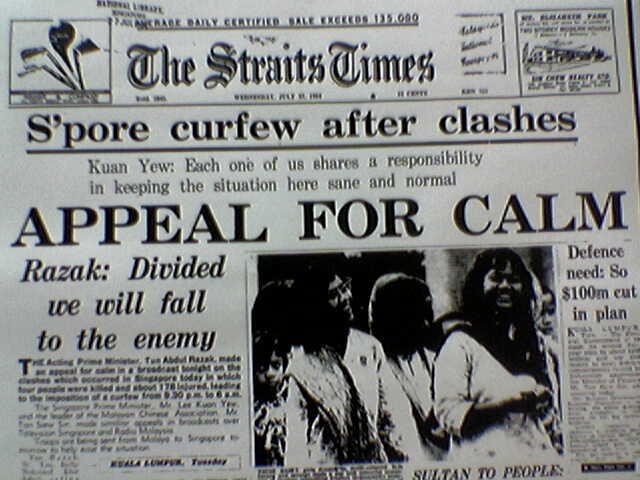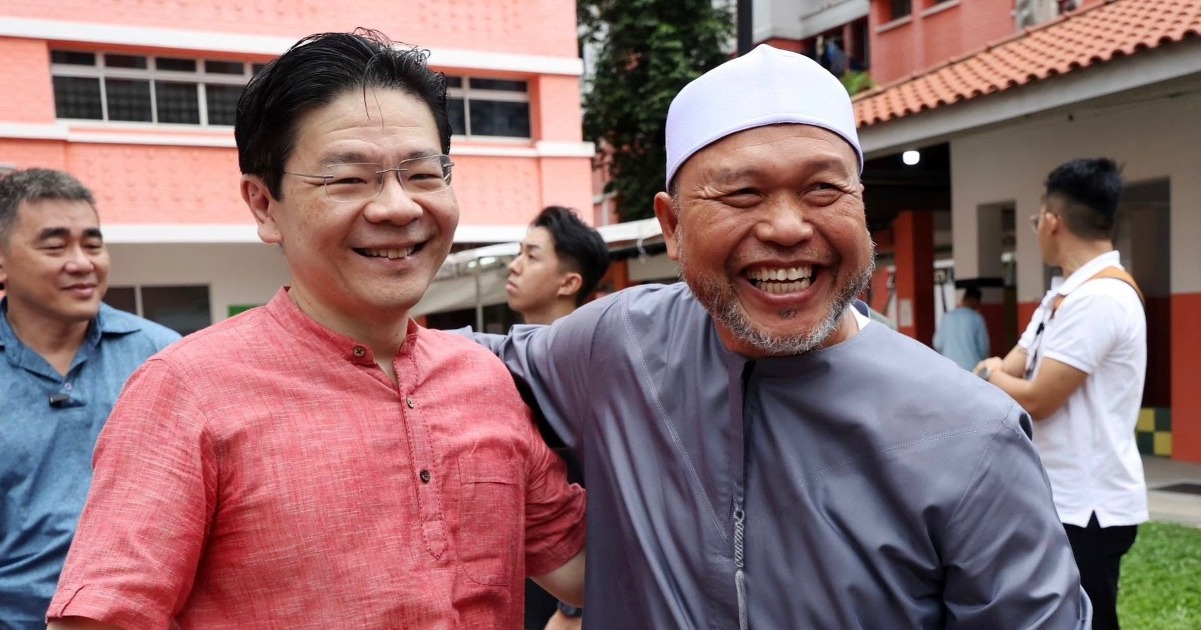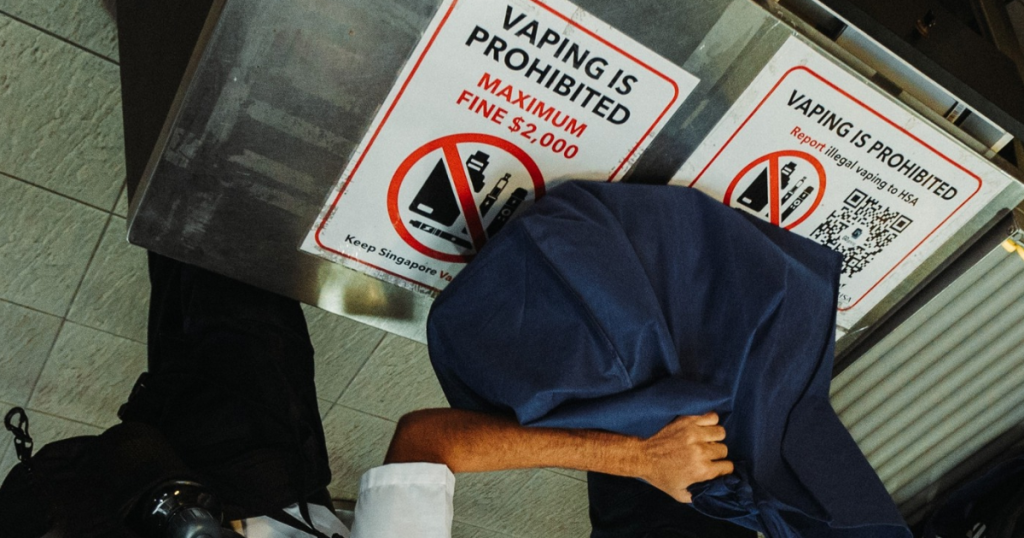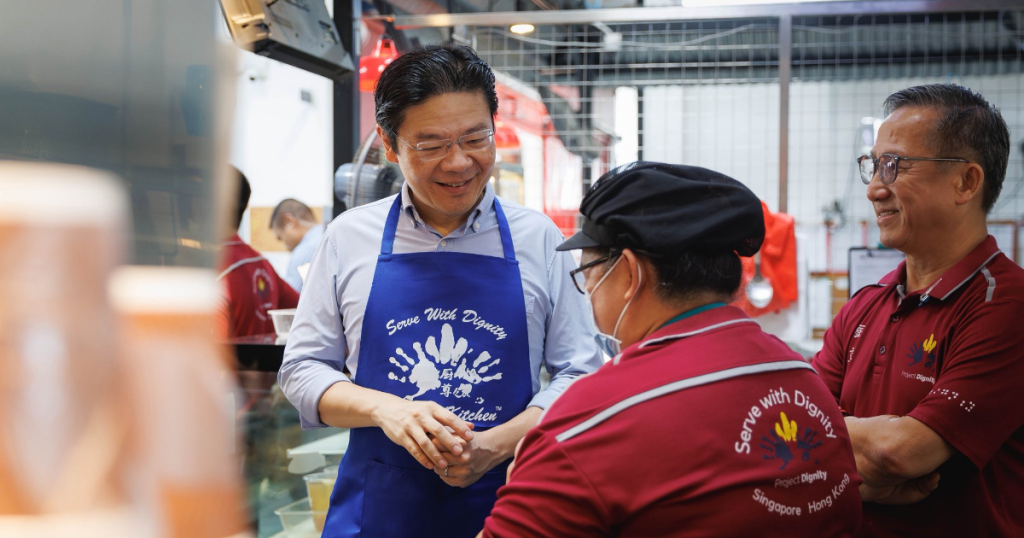Racial Harmony Day is celebrated on the 21st of July each year, for a very simple reason. It reminds us of the racial riots which erupted on 21st July 1964. Lasting over two weeks, the riots caused extensive damage. Twenty-three people lost their lives. Four hundred and fifty four others were injured. The psychological damage to our racial harmony, however, was far greater.
In the aftermath, Goodwill Committees were established in all 51 constituencies, comprising community leaders from every racial group. Their role was to help rebuild racial harmony by listening to residents’ concerns and addressing them directly. In the worst-affected areas, Peace Committees were also set up to dispel rumours and maintain calm.

During the July riots, Singapore was put on an islandwide curfew which lasted until 2 August.
One thing became clear to our founding fathers. For our young nation to survive and thrive, Singapore needed to strengthen our racial and religious harmony.
On the day Singapore separated from Malaysia, Mr Lee Kuan Yew made the following promise to Singaporeans.
“We are going to be a multi-racial nation in Singapore. We will set an example. This is not a Malay nation; this is not a Chinese nation; this is not an Indian nation. Everyone will have his place, equal: language, culture, religion.”
This was a tall order for our young country. As former Minister for National Development S. Dhanabalan said in 1989, “Each group clung to its own clan or dialect community for security. There was no social cohesion. We were a divided society”.
Since then, many of Singapore’s laws, policies, and even its built environment have been developed with the goal of reducing the segregation that had been an obstacle to building up mutual understanding and trust between different communities up to Singapore’s independence.
Schools that were divided along clan, language, and religious lines were largely phased out in favour of national education that were secular and open to all, with English as the medium of instruction. The PAP government saw these policies through, even though they came under heavy criticism at the time, especially from the Chinese community.
The PAP government also started building more community centres (CCs). These one-stop hubs were the first of many ‘third spaces’, alongside HDB void decks and hawker centres, that encouraged Singaporeans from all walks of life to socialise.
Providing opportunities, both voluntary and mandatory, for Singaporeans of all creeds and cultures to intermingle has been an important part of our nation-building journey to build social cohesion.
However, doing so has not always been easy. When National Service became mandatory, it was met with great resistance.
Our Group Representation Constituency (GRC) system, similarly attracts criticism from Opposition parties, even though it ensures that minorities are represented in Parliament, and forces political parties to abstain from race-based politics.
The HDB Ethnic Integration Policy, which stipulates the ratio of flats for different ethnic groups, continues to attract criticism, even as it allows us to ensure a good mix of races in our public housing estates.
In this deliberate trust-building way, Singaporeans have avoided building enclaves based on ethnicity or religious beliefs. Walking through any Singaporean neighbourhood now is to experience a community of diverse, different people going about their lives together in peace and trust.
Without deliberate policies, major fault lines in our society will deepen.
Even with our strict laws and grassroots efforts, racist incidents still occur. An inter-racial couple was abused in public. Politicians use racist slurs at rallies. Thankfully, these uncommon incidents incite shock and outrage in us because of how much they offend against our shared sensibilities.
The kind of harmony Singapore enjoy as a multi-ethnic and multi-religious society is not common. Neither is it automatic. It is why “regardless of race, language, and religion” must always be something we work on.
As Prime Minister Lawrence Wong reminded us, in a press conference during the General Elections, “Singapore’s greatest strength is our unity across race and religion. And this is not accidental – it is the result of painstaking hard work and patient effort by generations of Singaporeans.”
An important lesson for us to remember, on this Racial Harmony Day, that we may “protect this oasis of peace and sustain our exceptional harmony for many more years to come.”




